My hair stuck to my lip gloss-covered lips – Gallery & exhibition hopping in Cologne
Galerie Martin Kudlek, Galerie Ulf Larsson, Philipp von Rosen Galerie & Museum Ludwig | Art-Sunday Part 1
My Sunday in Cologne could have been like this: A cup of coffee in my favorite coffee shop, refreshing gossip with my girls, and news about the art world? – Wait, stop. No, we aren’t in a Hollywood movie or series like Sex and the City, and that wasn’t my Sunday. What was my day really like: I had a cup of coffee and spent my day in sunny Cologne, but there was something more, not the unnecessary gossip – There was a special vibe as I hopped through the galleries and exhibitions. Wild and free – despite the kitschy word frame from the early 2010s.
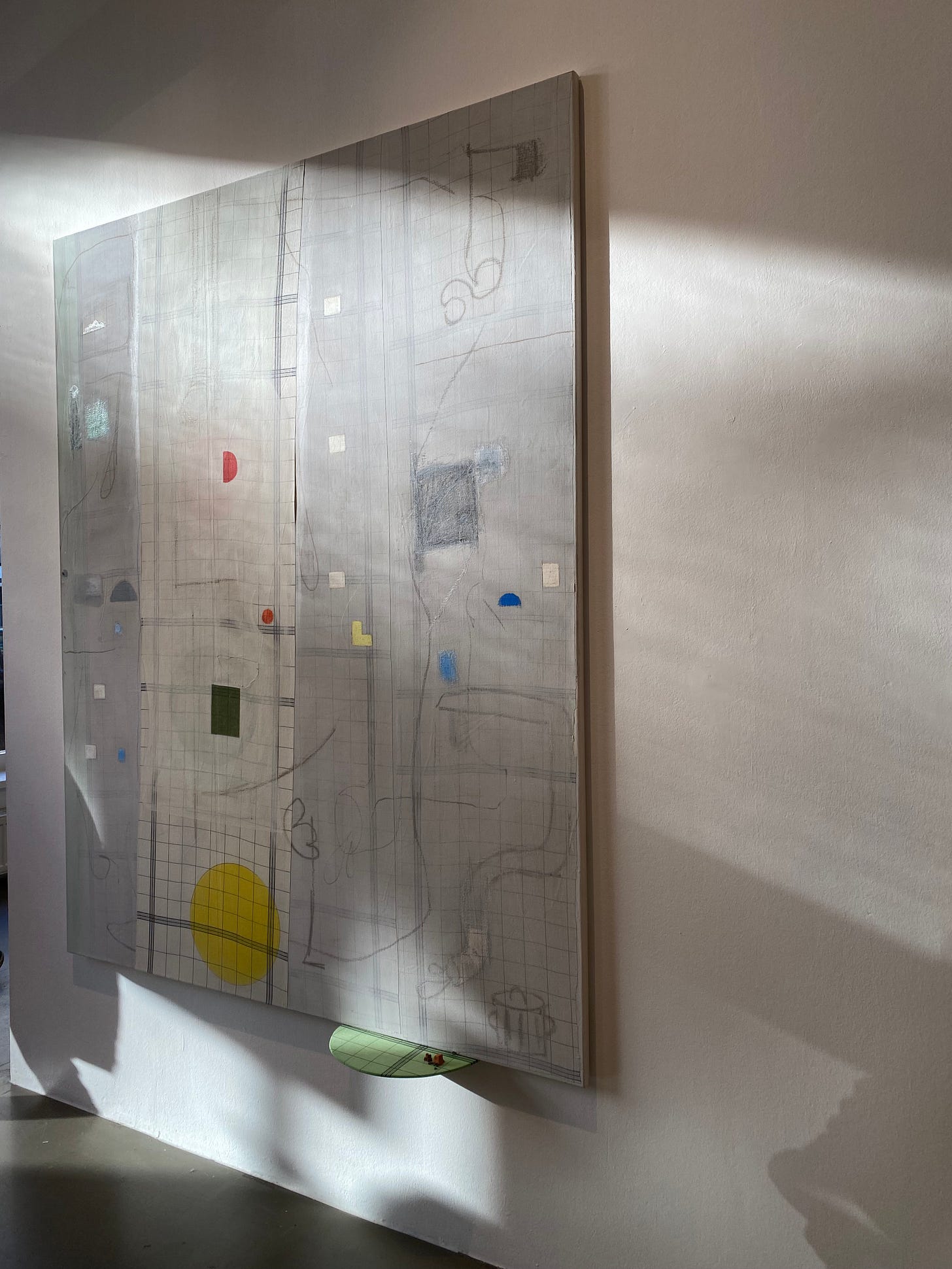
1. stop: Galerie Martin Kudlek
Picknick by Dragutin Banic
The refreshing paintings by Dragutin Banic (*1979) include several objects such as small figures on a platform connected to the canvas. His small and large paintings showcase exciting arrangements of color fields systematically placed in certain geometric patterns, creating unexpected spaces and architectures. Some works include dish towels, which establish a strong connection to reality. That special feeling of home, being welcomed, and the scent and texture of freshly washed dish towels suddenly come to mind. The works speak to us unconsciously and intrude into our space with the real objects Banic includes.
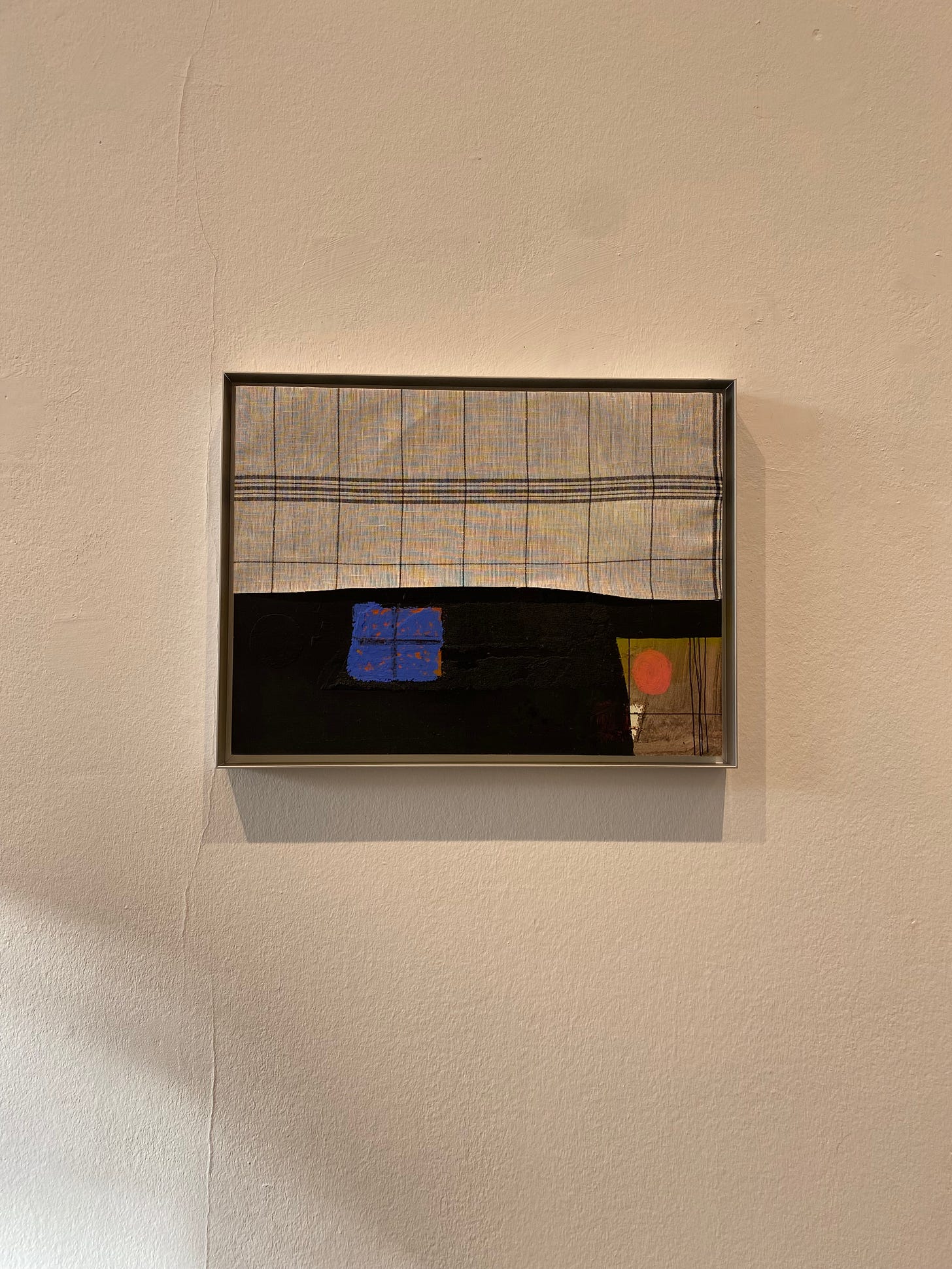
2. stop: Galerie Ulf Larsson
Unfortunately, the main exhibition wasn’t catching me, but one work by Fatima Conesa was insane. I didn’t take a photo and the website from the gallery is quite empty. A thing they should change in our digital world…
But have a look at Fatima Conesa’s Instagram or her website. Her works are stunning!
She works on her surfaces using various techniques, creating exciting impressions on the dark gray and partly black canvas.
3. stop: Philipp von Rosen Galerie
Koen van den Broek. Broken Road
Thick paint on canvas, sometimes resembling a stain, sometimes a long line, sometimes a vast expanse of open space, and at times an overwhelming burst of color – the Belgian artist Koen van den Broek (*1973) didn't pioneer color field painting, but, like many others, he builds upon the tradition of abstract painting, thus continuing art history. Whether it's color field painting, Art Informel, Action Painting, or other mid-19th century art movements, the color, the experimentation with the background, the application of color, and the effect it has on us and the surrounding space create a special tension. Just consider Marc Rothko's world exhibition in Paris, an exhibition that plunges you into the realm of color...
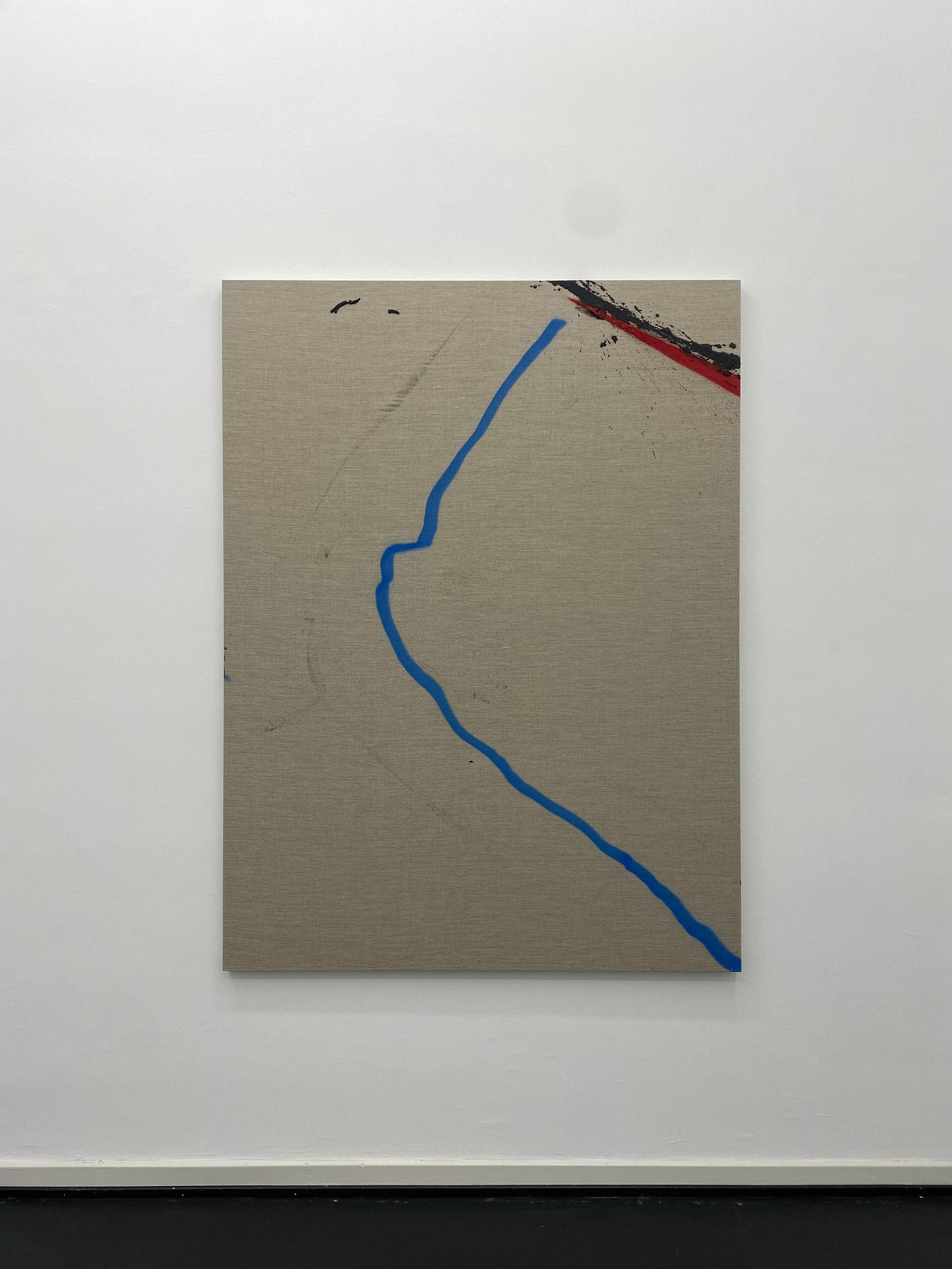
Now, let's examine Koen van den Broek's paintings. He has chosen to work with a unique material: street paint. No longer using oil paint or acrylic, van den Broek employs unmixed paint designed for road surfaces. The title "Broken Road" offers a subtle nod to the material, drawing from images of streets or urban settings. The artist is confined to primary colors: green, white, and black. Additionally, he incorporates tar, which lends the material a distinct surface. Here, much like with Banic, various senses are engaged, including the special tactile surface that is generated. We don't merely perceive an image of the world; rather, we encounter the "world itself" (press release).
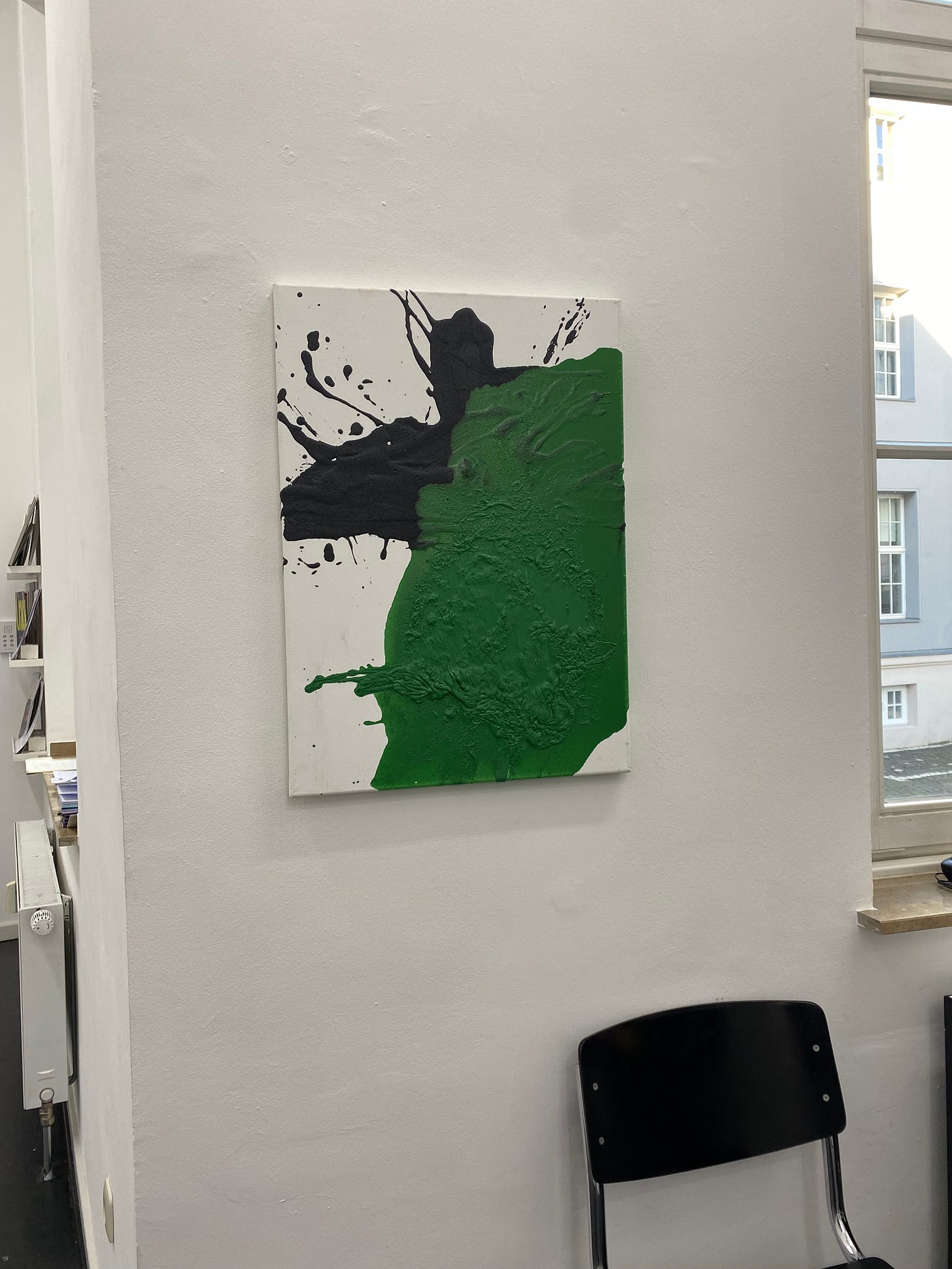
4. stop: Museum Ludwig
Walde Huth. Material und Mode
Fashion photography always possesses its own special charm. It exudes elegance, smoothness, and sheer beauty. Soft fabrics, textile materials, and everyday objects, as well as clothing from luxury brands like Dior, are presented uniquely by photographer Walde Huth (*1923). Alongside her partner Karl Hugo Schmölz, she worked as an advertising and architectural photographer globally, known collectively as Schmölz + Huth from 1958 to 1986 in Cologne.
Walde Huth studied photography from 1940 to 1943 in Weimar and worked as a freelancer after the end of the Second World War. In 1953, she opened a studio in Stuttgart with eight employees. Collaborating with high-fashion brands such as Christian Dior, Jacques Fath, Givenchy, and Maggy Rouff, she contributed to the creation of the world-famous "New Look"1.
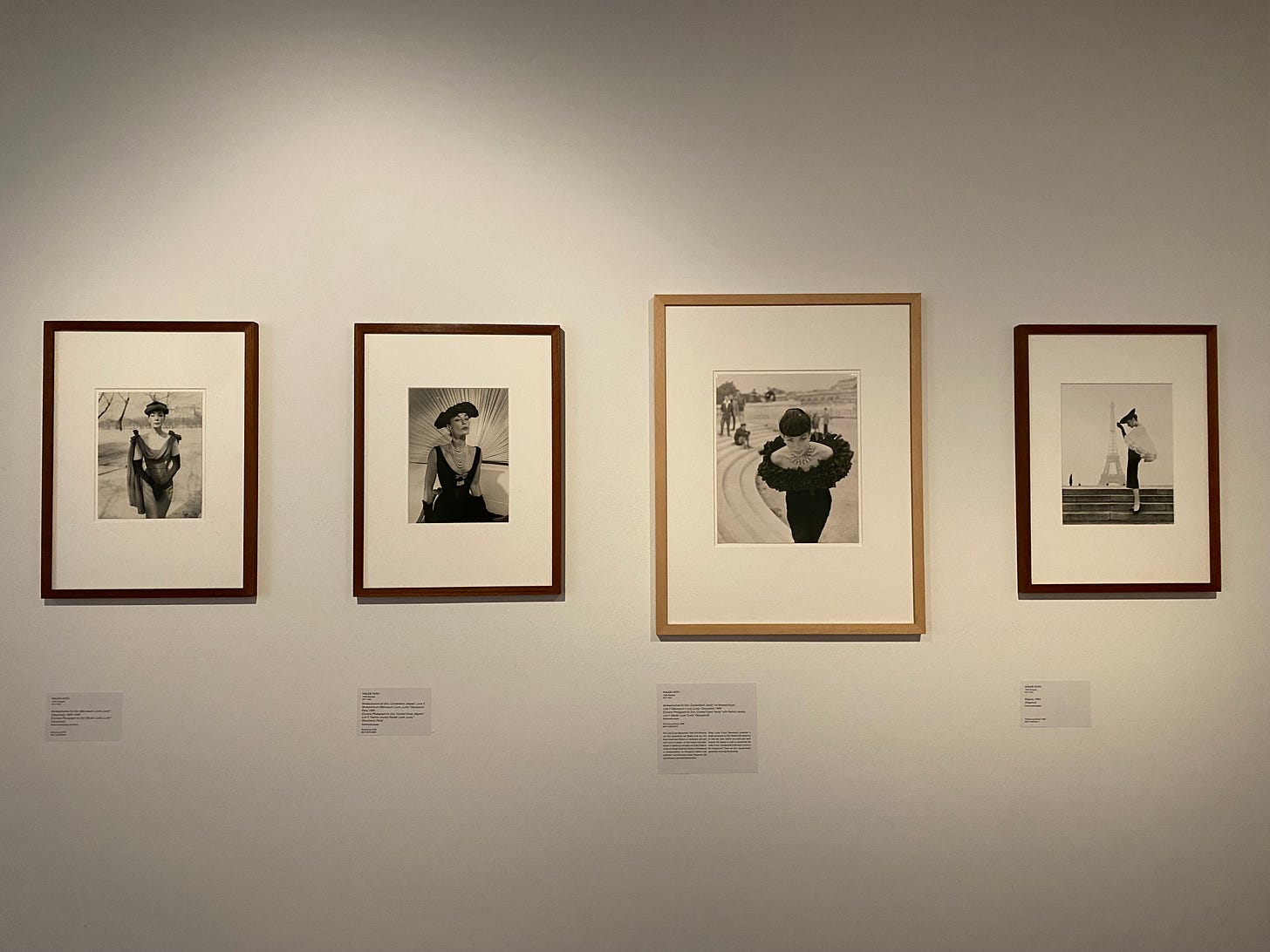
The exhibition offers insight into how Walde Huth perceived the relationship between fashion and architecture, as seen in photographs like the one for Dior featuring the cocktail dress "Vanity" with model Lucie Daouphars. Huth asked the model if she could place her arms behind her back and bend slightly toward the camera. The posture she adopts mirrors the fluffy collar and the curved staircase in the background— a great photograph that I unconsciously leaned toward. I found myself crossing my arms behind my back like the model and holding a similar pose.
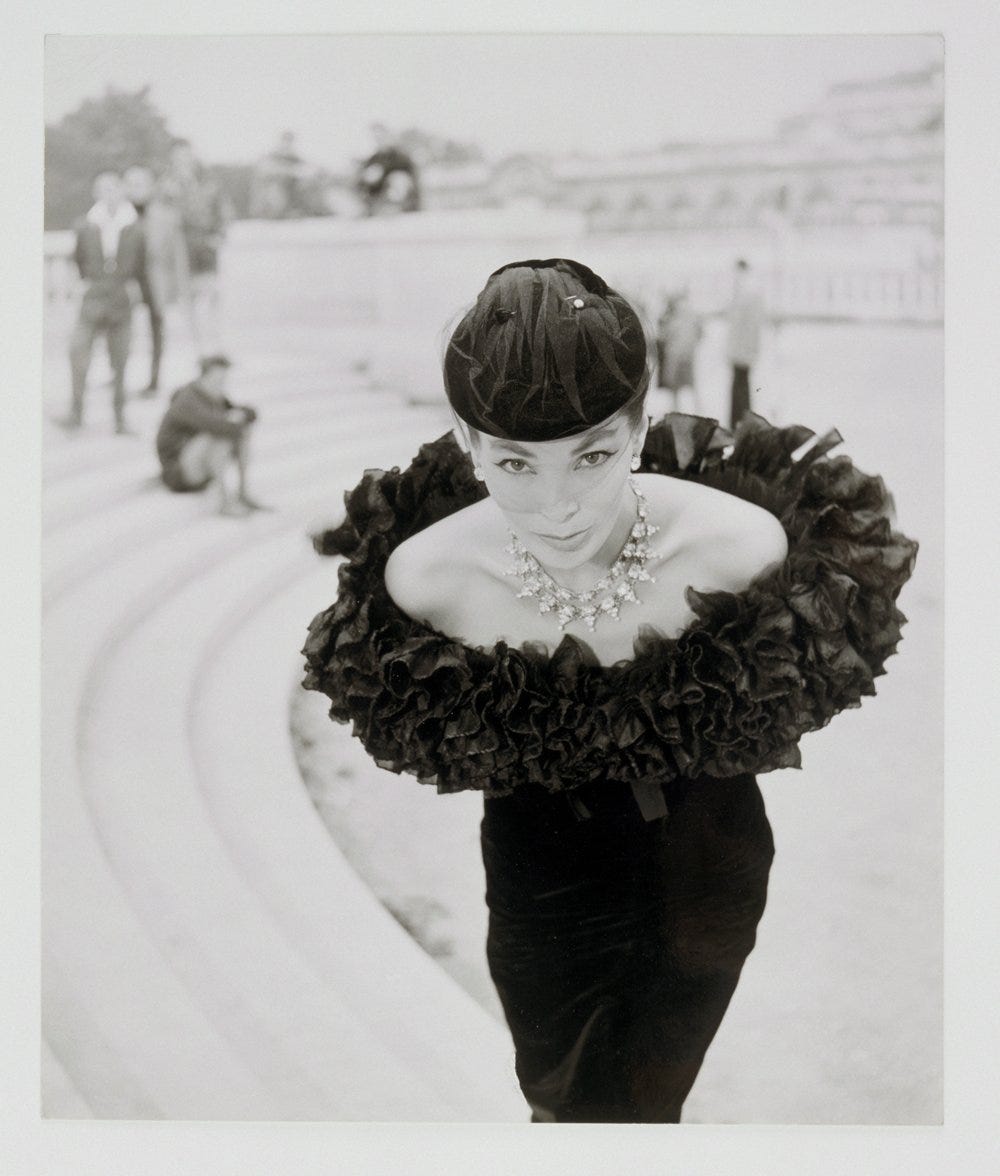
Film sequences from 1990 depict five hours of footage showcasing light, warmth, and flowing curtains at the window. Huth wrote: "I always found it appealing to transform material into essence, linking emerging light formations to each other (…)."2
5. stop: Museum Ludwig
Pablo Picasso Suite 156 mit Kubra Khademi
I was unbelievably disappointed after viewing this exhibition. And I must admit: I can become excited rather quickly. However, what was the show attempting to convey?
Firstly, there was a spelling error in the artist's name (Kuba Khademi instead of Kubra Khademi). This could have been corrected quickly, but it wasn't. Furthermore, I couldn’t get the connection between Pablo Picasso—a male artist creating 156 naked, partially pornographic images of women—and Kubra Khademi, who crafts political statements with her art in her home country, Afghanistan, particularly focusing on feminist themes.
The association with the feminist magazine, released concurrently with Picasso's creation of Suite 156, isn't enough to leave Picasso unquestioned. I wished for more examples to describe the contexts of the time and Picasso's references to it. Moreover, frankly speaking, the sheer number of 156 sheets depicting scenes from brothels is disproportionate to the three illustrations by Kubra Khademi.
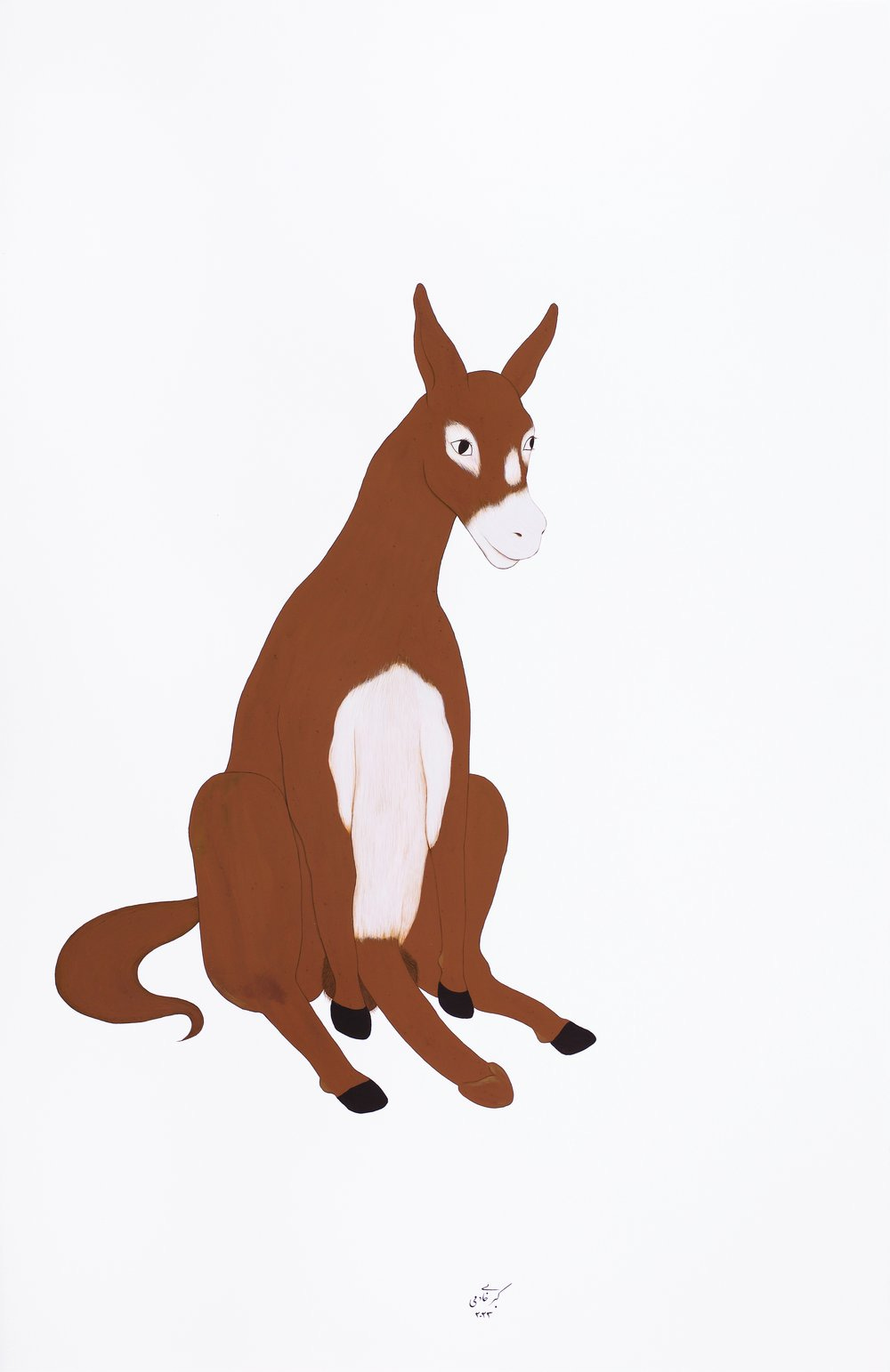
I genuinely wanted to appreciate this exhibition because Kubra Khademi's artworks are simultaneously brutal and honest—offering insight into social and political issues. However, her works did not receive the attention they deserved; they were banished to a small room. Perhaps one could argue that women in Afghanistan are severely restricted in their freedom and cannot develop in the same way as women in Western countries, which is why they are given little space in the exhibition. But is this symbolic? I'm unsure.
The amazing
Jennifer Braun wrote a fantastic review of the latest exhibition on Kubra Khademi at Galerie Martin Kudlek. Take a look!
All in all, it was an interesting day. You see, reflective consumption and questioning are not only important on the Internet but also in art. We can't wait to see what the next "Art Sunday" will bring.
Until then, Sabine
Portrait of Walde Huth, URL: https://www.schmoelz-huth.de/en/portrait/, (01.03.2024).
Exhibition text, Walde Huth. Material und Mode, Museum Ludwig, Köln (23. September 2023 – 3. März 2024).





Slay